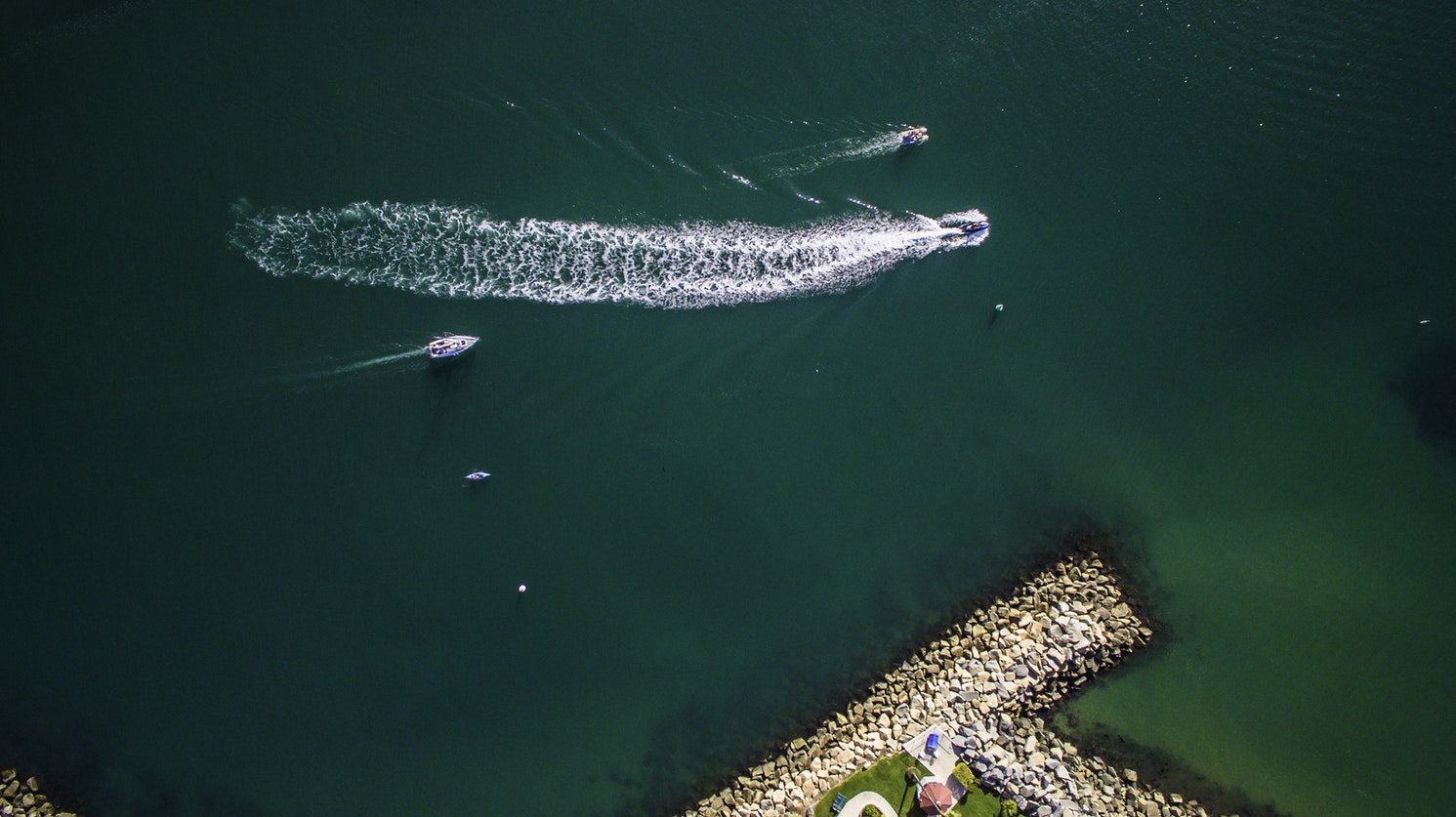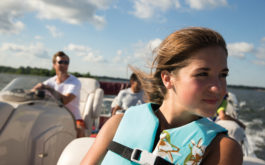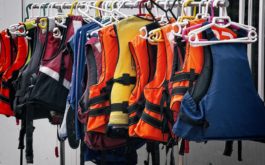Handling a Personal Watercraft
Personal Watercrafts (PWC) such as a jet-ski or sea-doo (also known as wave runners) are a super fun and exciting way to get around on the water. However their handling is much different from traditional boating. Think about it like this: jet-skis are to boats what motorcycles are to cars. Both of them are driven on the water or roads. But there are different skills that need to be used on a motorcycle (such as balance and steering) that are not used when driving a car.
Operating a personal watercraft (PWC) is a fun, fast way to enjoy recreational boating! However, PWCs are a different type of watercraft and their handling characteristics will differ from those of traditional boats.
Throttle Steering
You can turn a personal watercraft (PWC) left or right using the handlebars, but only if you’re applying throttle. This forces water through the steering nozzle at the stern of the PWC. This makes the steering incredibly responsive to even the slightest turns. Understand that as you release the throttle lever, you’ll lose control of the steering ability.
Note: Some newer PWC models may have the technology in place to maintain the steering ability when the throttle is released. Know your PWC!
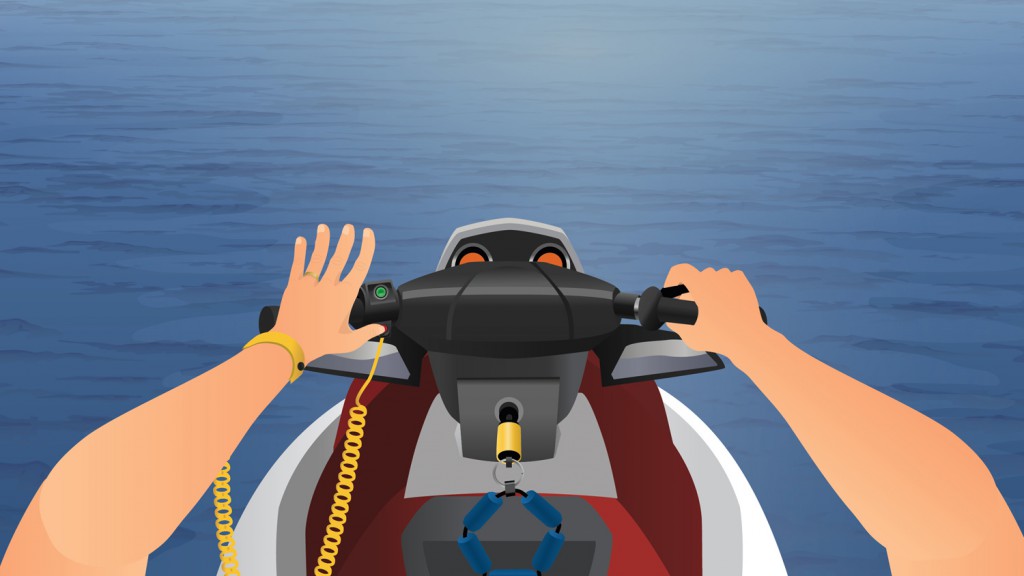
Safety Lanyard
When operating a personal watercraft (PWC), make sure your safety lanyard (engine kill switch) is securely attached to your wrist or life jacket at all times. This way, if you fall off the PWC, the lanyard will go with you and will cut off the engine power. The safety lanyard must be kept from getting caught on the handlebars and be free to release from the PWC if you fall.
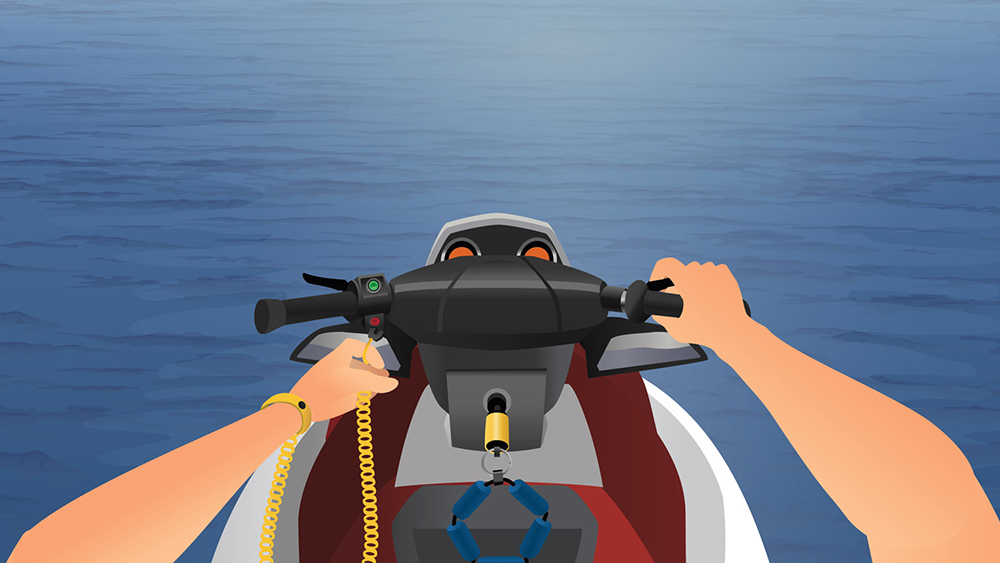
Stopping
To stop a personal watercraft (PWC), release the throttle, press the stop button and disconnect the safety lanyard. Never use the reverse (if so equipped) to stop a PWC because you or your passengers could be thrown from it. Keep in mind that a minimum of 75 m is required to stop a PWC from full throttle. However, the exact stopping distance will vary depending on the type of PWC you’re operating. Other factors are the speed you’re travelling, as well as the water and wind conditions.
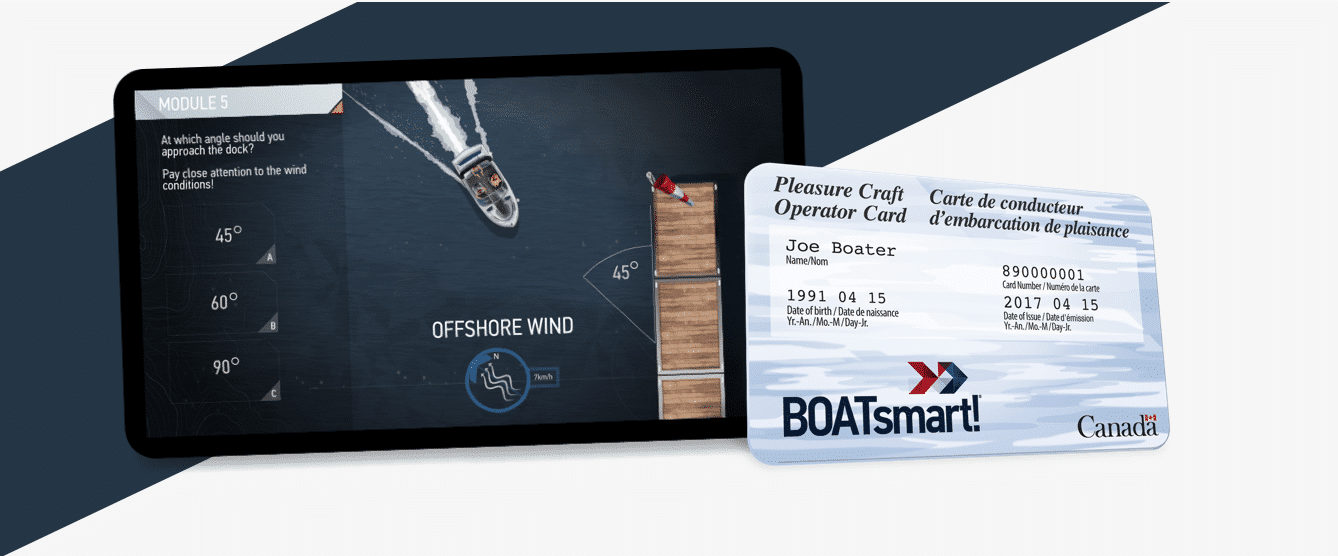
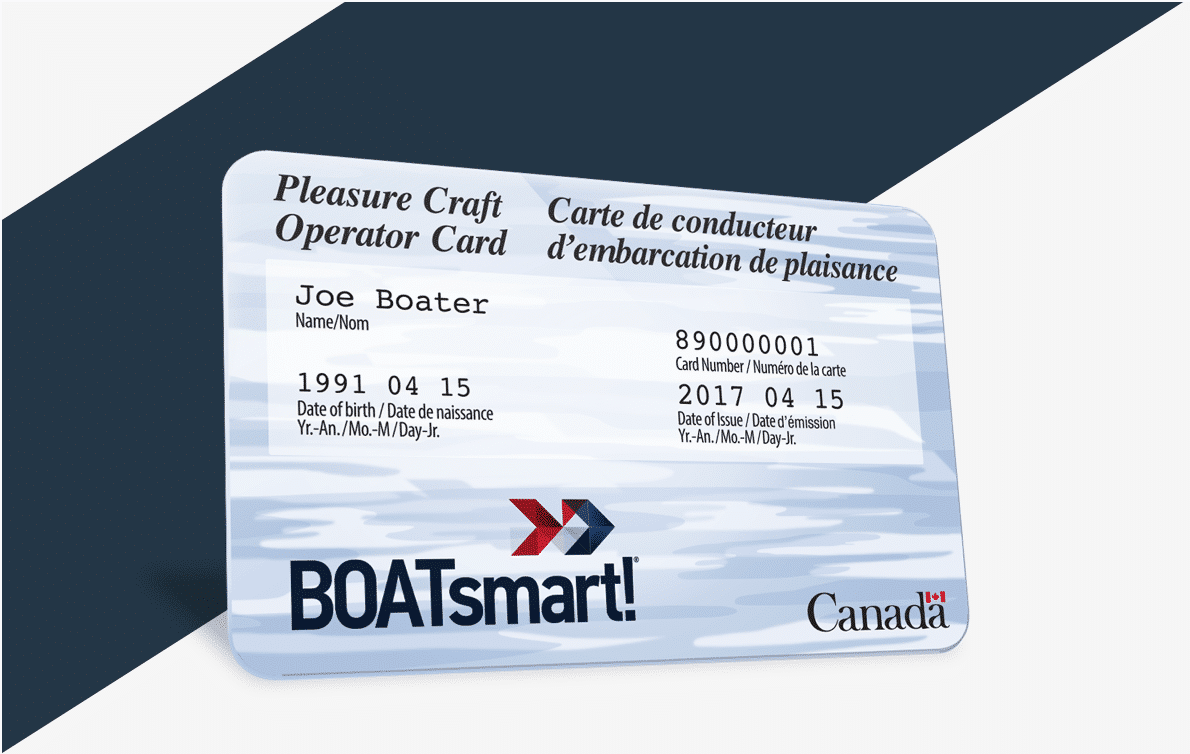
Get your Official Canadian
Boating License
The Official Transport Canada Boating Course, Test & License.
Get your Official Canadian
Boating License
The Official Transport Canada Boating
Course, Test & License.
Re-boarding a Personal Watercraft
- If the personal watercraft (PWC) has capsized, it should be turned upright and in ONE direction only. Check your owner’s manual or the warning sticker located on the stern of the PWC to determine the proper direction to right your PWC.
- Swim to the stern of the PWC to re-board it. Never attempt to re-board from the side, because the PWC could flip over on you.
- Use the handle on the transom or seat and pull yourself up, placing your knees on the boarding platform.
- Once aboard, move forward onto the seat and re-attach your safety lanyard.
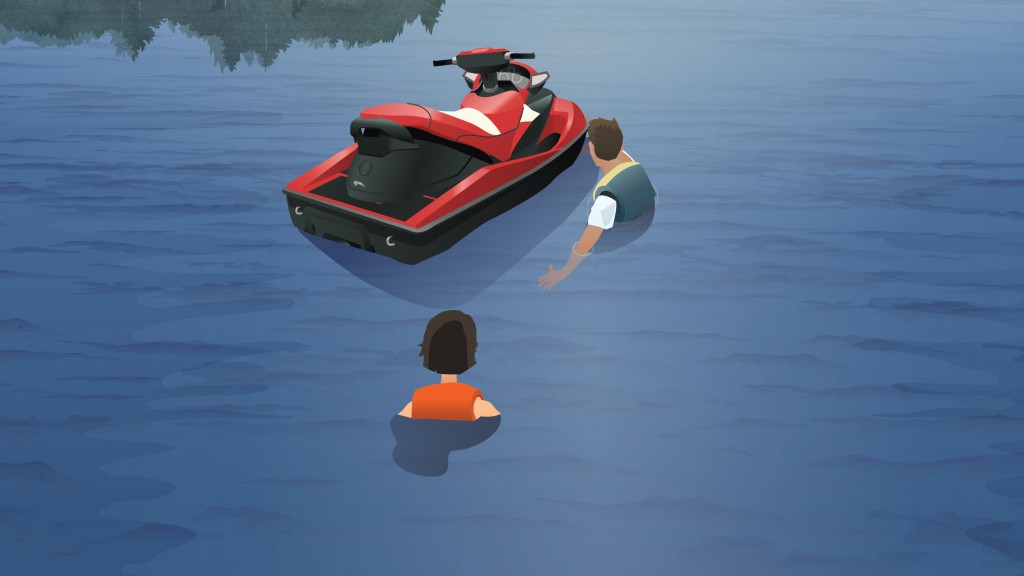
Safety Tips for Re-Boarding a Personal Watercraft (PWC):
- Practice re-boarding a PWC in chest-deep water (it’s an exhausting procedure!).
- Never attempt to re-board when the engine is running—the powerful suction from the jet thrust system may ingest loose items such as long hair, clothing, or the straps of your life jacket.
- If you have a passenger re-boarding the PWC from the water, never start the engine before they have safely re-boarded. The force of the water exiting the jet thrust nozzle could seriously injure them.
Personal Watercraft Accident Risks
The speed and steering responsiveness of a personal watercraft (PWC) may encourage operators to attempt dangerous maneuvers. However, you must understand that risky maneuvers, such as racing or wake jumping, are illegal.
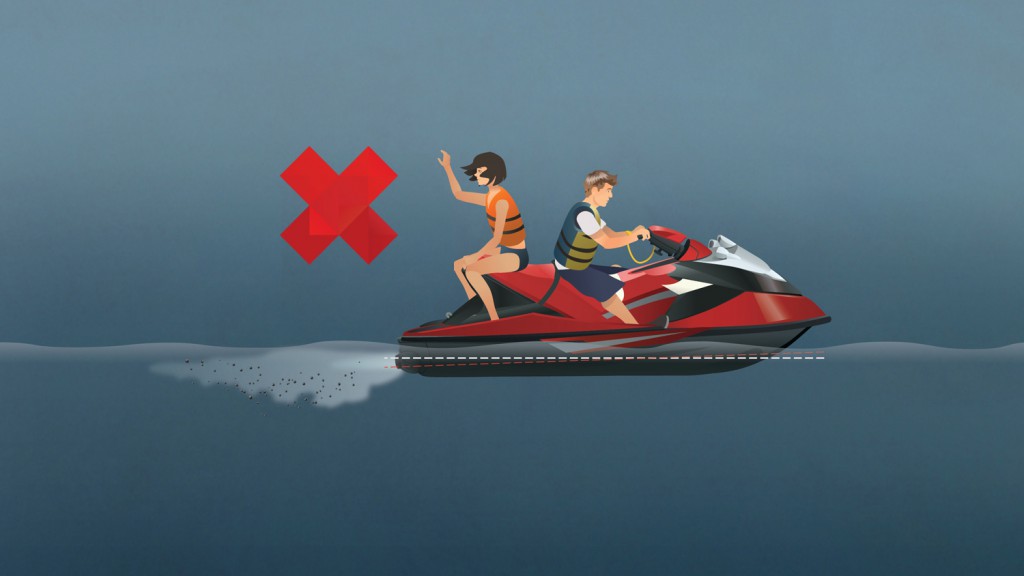
To prevent the risk of collision and other accidents from occurring while you’re operating a PWC, always follow these safety practices:
- Make sure your passengers are wearing Coast Guard-approved life jackets.
- Show your passengers how to operate the PWC for you in an emergency situation.
- Maintain a proper lookout while turning the PWC and beware of your blind spots.
- Avoid operating in areas with heavy traffic.
- Operate at a safe distance from shore, traffic and other obstacles.
- Keep the load balanced and centered to avoid capsizing.
- Have your passengers hold onto the seat strap while the PWC is underway.
- Inspect and maintain your PWC to avoid a mechanical breakdown on the water.
- Make sure your passengers never place their feet in the water during operation.
- Always cross a wake or large waves at a 90° angle to maintain lateral stability.
- Never engage in wake-jumping or racing.
